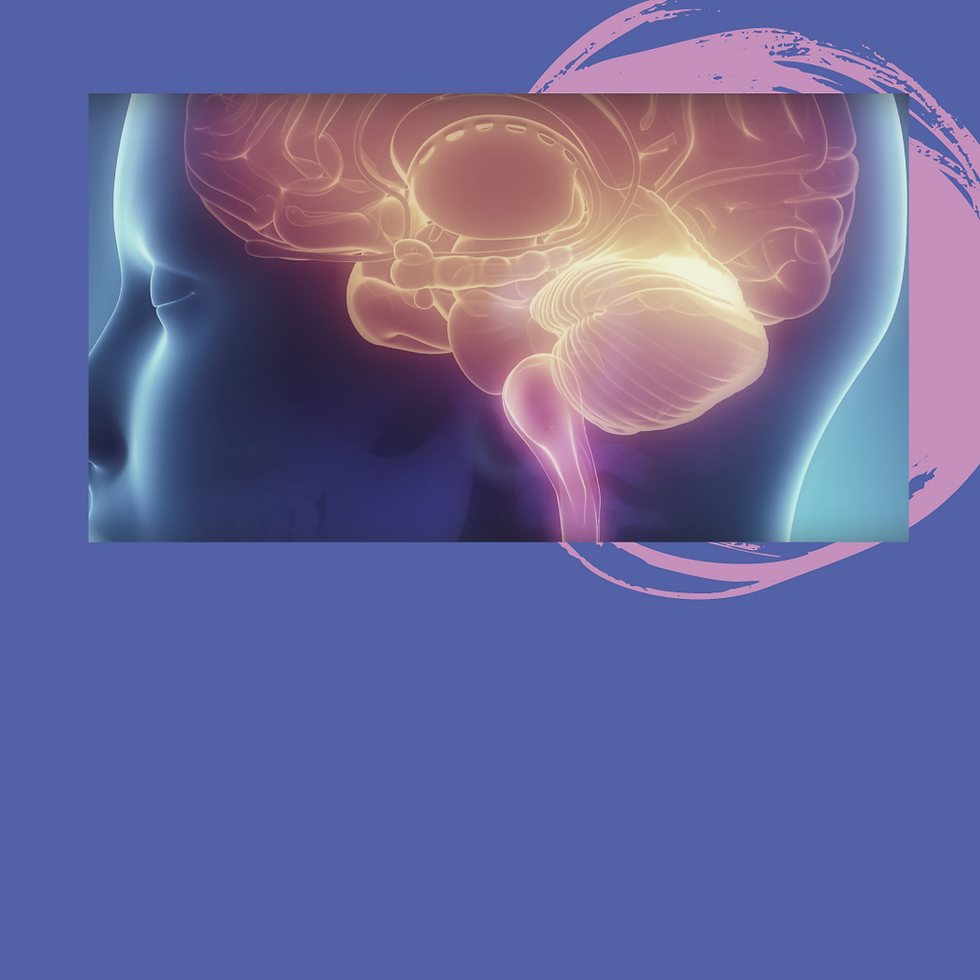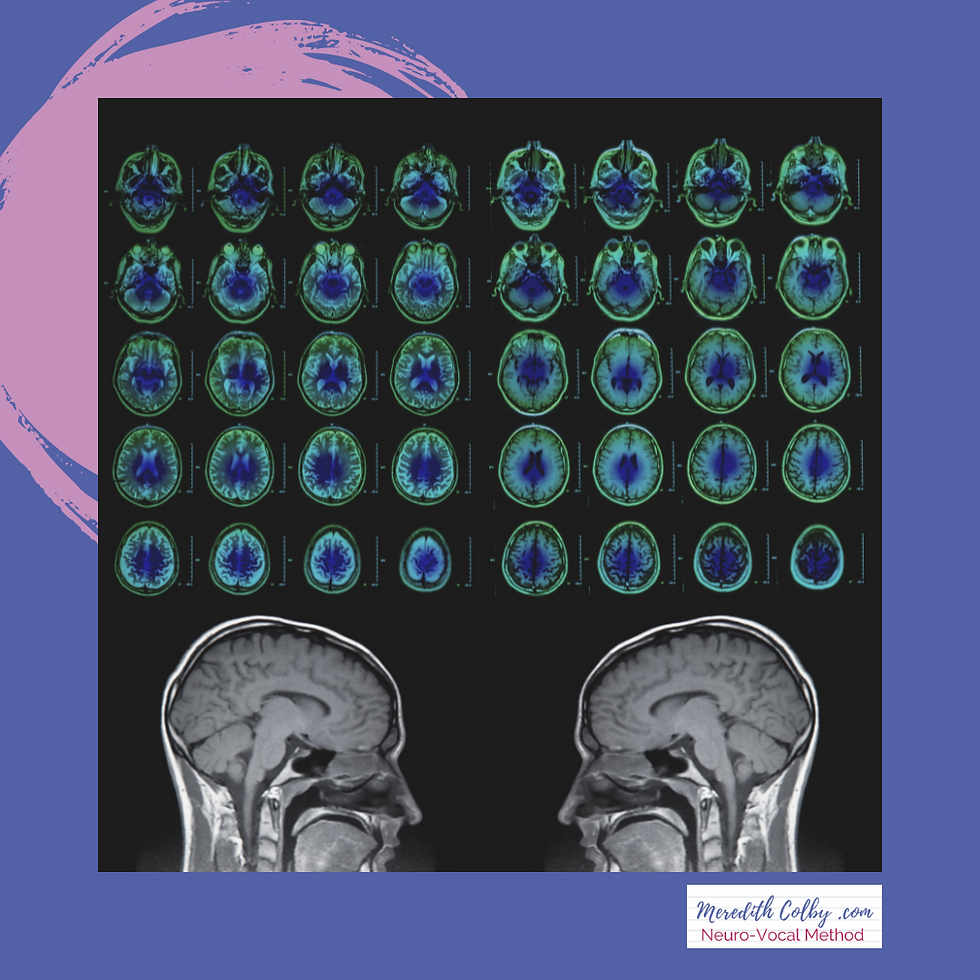THE MISSING PIECE IN VOICE TEACHING (Spoiler: It's Your Brain)
- meredith
- Jan 8, 2019
- 3 min read
Updated: Dec 30, 2024
The following is an excerpt from Money Notes: How to Sing High, Loud, Healthy, and Forever by Meredith Colby
Chapter 4: This is Your Body, Singing

This isn’t a biology book; it’s a singing method book. But I need to explain the basics of the way Neuro-Vocal Method works in your body. You have to understand it at least a little bit, or you won’t apply it effectively.
I’m going to describe the biology and physiology with as much Regular Person language as possible. I promise I’ll be brief, and I’ll avoid being unnecessarily specific. Just enough to get the point across.
BRAIN NEIGHBORHOODS

Your brain is comprised of three parts: the cerebellum, brain stem, and cerebrum. The cerebellum is a big contributor to regulating and coordinating movement, posture, and balance. It’s called the “old brain” because we share this anatomical feature with our four-legged brethren all the way back to our evolutionary grandparents, the reptiles. For this reason, I lovingly refer to the cerebellum and brain stem as the “Lizard Brain.” We’re going to be seducing your Lizard Brain—which is really only interested in the way things feel to you—and get it to influence your motor cortex.
Your motor cortex is in charge of a whole lot of files, all collected under the heading “How You Do Stuff.” So, for instance, when you catch something that’s been tossed at you, you don’t think, “I’ll now flex this muscle, then this muscle, now relax this tendon, and adjust for this trajectory, etc.” Nope. You just reach out and catch. That’s because you have a unified motor response to the instruction “catch.” It’s called a motor action plan. It means that as you learned to catch things flying your way, your brain bundled all the individual physical movements—along with the visual and tactile information—into one unified action.

To get a sense of what I’m talking about, think about signing your name. You exclusively sign your name with either your right or left hand. Do it with your other hand and it becomes someone else’s signature. (Probably someone who’s, like, two years old.) That’s because you have a motor action plan called Signing My Name housed in your motor cortex, and it applies only to one hand. Attempting the same action using the other hand—the one that doesn’t have that motor action plan—produces very different results.
Once you have a motor action plan for a specific activity, it’s pretty hard to change (as you may recall from when you were fifteen and you tried to change your signature to make it cooler). That’s because that motor action plan initiates in response to your intention, not the actual movement. Those ball-catching or name-signing neurons start firing about 100 milliseconds before there’s any actual motor response. Then, to make things even harder, you have another neighborhood in your brain called the somatosensory cortex. The somatosensory cortex anticipates how your physical actions are going to feel to you and how objects will feel when you touch them. That’s called a forward model.
That, for good or bad, is why it can be very hard to change your singing. You’ve been singing all your life. You have a seriously complex and unique file in your motor cortex called Sing. You have a forward model of Sing that anticipates what you’ll be feeling when you sing. Your intention to sing opens the Sing file, which results in a manner of singing that you’ve been learning and reinforcing your whole life.

Therefore, if you want to change your singing, you have to change your unconscious motor response to the command Sing. You have to carve new neural pathways. You have to build a new—or change your existing—motor action plan; your Sing file. To do that effectively you’ll need a basic understanding of how things work, and you’ll have to (at least temporarily) agree with some of the premises of Neuro-Vocal Method.
Of course, singing isn’t the same as signing your name. Singing is an art form. Catching a ball, though miraculous in its way, is gross motor movement. Singing requires a finer coordination as well as a more specific and (often) emotional intention. Because singing is so complex, change can be more difficult. But the payoff is fabulous.
###
Dive deeper into Neuro-Vocal, the brain-centered approach to healthy singing for popular styles!
Professional training for Voice Teachers & Coaches
If you're interested in learning more...
USE THE CODE 10OFF to get $10 off this course!
If you haven't read it yet,
USE THE CODE MONEYNOTES to get 75% off the paperback version!
...or you can get the e-book
USE THE CODE BLOG to get 30% off the e-book!








Comments